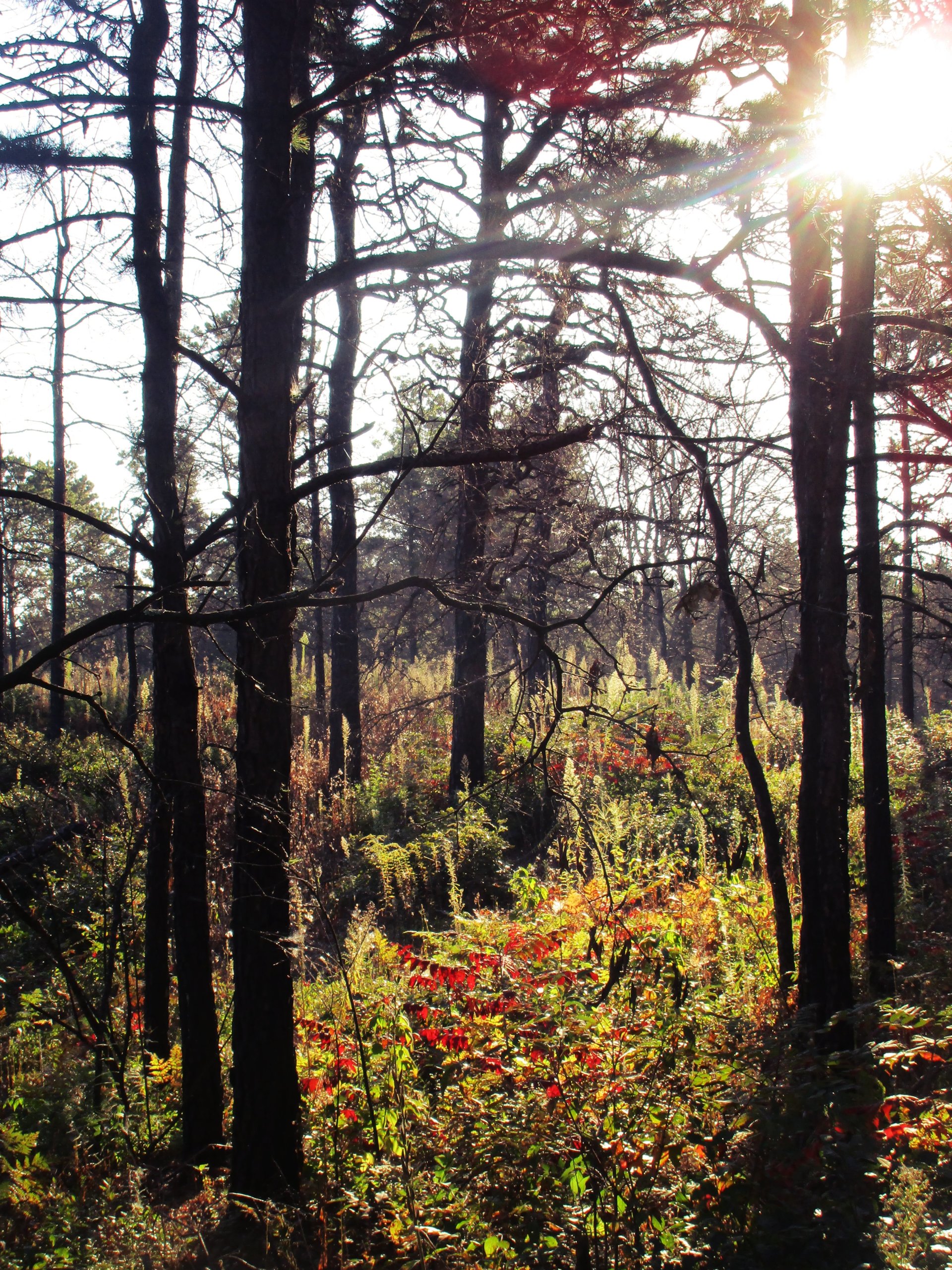by Sandy Sheridan
What are we going to do about these butterflies?
What the US Fish and Wildlife Service thinks should be done has been specifically outlined in the “Karner Blue Butterfly Recovery Plan” (October 2001). This 239-page plan comprehensively describes the Karner Blue, its plight and the plan of action to perpetuate its populations in the 13 recovery units (RU’s) identified. The Pine Bush is one of the 13 RU’s examined.
Lycaeides melissa samuelis, the Karner Blue Butterfly, is one of 388 animals on the Unites State Endangered Species List (USFWS, 2002). Based on the Endangered Species Act, the Secretaries of Commerce and the Interior are responsible for developing and implementing recovery plans to restore the populations of these endangered species. The Karner Blue Butterfly Recovery Plan was prepared for the US Fish and Wildlife Service in October of 2001. The Recovery Team that developed the document is a hodge-podge of experts, made up government agencies, education institutions, corporations and non-profit organizations.
The first section of the Plan is a comprehensive summary of the dwindling butterfly species. Its exact taxonomy is actually still in question (some people think the Karner Blue Butterfly is a species and some classify it as a subspecies), though the Plan lists the Karner Blue as its own taxon with “affinities to both Lycaenidae melissa and Lycaenidae idas groups”. This uncertainty is relevant when determining the capability for reintroduction and translocation.
Vladymer Nabokov (who gave the Karner Blue its Latin name) noted that the Karner Blue Butterfly should be its own distinct species. He observed that the "male genitalia of L.m. melissa [the species to which the Karner Blue belongs] were very variable geographically, but the male genitalia of Lycaenidae melissa samuelis [Karner Blue Butterfly] were remarkable constant over the entire range of the subspecies." He also found that "L.m.samuelis uses only one host plant throughout its geographic range, while L.m. melissa uses many species of host plant." The currently accepted status is deemed "subspecific."
The Karner Blue goes through two generations each year. The first brood hatches in the spring from eggs deposited on lupine the year before. The larvae develop in 4 stages (instars) over 3 to 4 weeks. They feed on lupine, producing a windowpane effect on the leaves. The butterflies pupate in late May to early June. The adult Karner Blue Butterflies live anywhere from 4 to 21 days, during which the females lay their eggs.
The second brood hatches in 5 to 10 days and feed on both the lupine leaves and flowers. The adults fly from 8 am to 7 p.m. (weather permitting) until mid-August. The second brood produces 3-4 times the adults than the first brood, probably because of warmer, drier conditions that prevent mildew in their food source. Karner Blue flies short distances, but often. Males travel almost 5 meters at a time, while females fly only about 1.5 meters. They tend to travel canopy openings and “bask” in the sun for thermoregulation.
The Karner Blue Butterfly once inhabited a wide range of the northern US, from Minnesota to Maine. (It no longer exists in Iowa, Illinois, Pennsylvania, Massachusetts or Maine.) The insect dwells in areas that have sustained glacial activity offering partially shaded regions, nectar and lupine plants. Lupine (Lupinus perennis) is a member of the pea family that thrives in open to partially canopied areas. Lupine plants provide the only source of food for Karner Blue larvae. The plants reproduce by producing stems through rhizomes and through seeds, and survive better when an overlying plant protects them from grazers such as deer. Nectar provides adult Karner Blue Butterflies with added energy that yields greater longevity and fecundity.
Ants were found to exhibit a mutualistic relationship with Karner Blue Butterfly larvae, especially those in the 3rd and 4th instar. The larvae secrete a fluid containing carbohydrates and amino acids that the ants consume. In return, the ants build nests of dead vegetation around the pupae, providing protection. There is an ant species, however, that eats Karner Blue eggs, which may have happened at the Crossgates site.
More threatening menaces to the Karner Blue, however, are human related: habitat loss and degradation, and discordant management practices. To overcome such stresses on the butterfly, the Plan outlines a blueprint for recovery in Part II.
The goal of the Plan is to be able to reclassify the Karner Blue from its endangered status to a fully recovered species, which, according to the Plan, should take about 20 years. The criteria for the reclassification is highly explicit and includes increasing the butterfly’s populations in the 13 recovery units, maintaining management and monitoring, improving connectivity, and eventually decreasing the need for management. The 13 recovery units include one in New Hampshire, four in Michigan, one in Indiana, six in Wisconsin and, of course, our Glacial Lake Albany here in New York. Glacial Lake Albany includes the Pine Bush as well as sites in the Saratoga Sandplains.
The management plan is specific to each recovery unit, but the primary recovery tasks are comparable. Monitoring the butterflies and their habitat, improving habitats, and “integrating management operations” are fundamental steps outlined in the Plan. The tasks specific to the Pine Bush include restoring and maintaining the habitat, improving connectivity, and coordinating management between the Preserve and private landowners.
The USFWS realizes that there are private landowners with varied opinions about their role in preservation of Pine Bush habitat. The Service respects the rights of the landowners and wants them to make their own decisions about land usage. To better prepare them for such decisions, the Service wants to extend an outreach program with standardized information.
The third section of the Plan sums up Parts II and I with an Implementation chart. Each recovery unit is explored, with priorities, tasks, responsible parties and estimated costs clearly outlined. The Plan is quite detailed and an electronic version in PDF is available for review by emailing a request to pinebush@aol.com.
Printed in the January/February 2003 Newsletter
